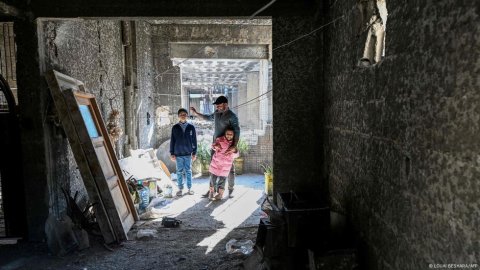Understanding the Decline in Asylum Applications in Germany and the EU
The landscape of asylum applications in Germany and the broader European Union has undergone a significant transformation in recent years. This decline has raised questions about the dynamics of migration, policy changes, and global crises. Understanding the factors contributing to this decrease is essential for grasping the current state of humanitarian responses in Europe.
Key Factors Behind the Decrease
Several interconnected elements have contributed to the decline in asylum applications in Germany and the EU. These include:
1. Policy Changes and Regulation Adjustments
European countries have increasingly tightened their asylum policies in response to the high influx of migrants in previous years. The implementation of stricter regulations has made it more challenging for individuals to apply for asylum.
Key aspects of these policy changes include:
These measures have resulted in a more cautious approach to asylum seeking, leading to a noticeable decrease in applications.
2. Impact of International Conflicts
The geopolitical landscape has shifted dramatically due to various conflicts around the world. While the Syrian civil war once drove a significant number of asylum seekers to Europe, the focus has moved to other regions.
Some critical points to consider include:
This shift highlights the importance of understanding regional migration patterns and their influence on asylum statistics.
3. Economic Factors and Migration Trends
The economic climate in Europe has also played a crucial role in shaping migration trends. As countries grapple with economic challenges, there has been a growing reluctance to accept large numbers of asylum seekers.
Economic considerations include:
These factors contribute to a more cautious approach towards asylum applications, with individuals weighing their options in light of the economic situation in potential host countries.
Global Health Crisis: The COVID-19 Pandemic
The COVID-19 pandemic has further complicated the situation. Travel restrictions and health protocols have created barriers for many individuals seeking asylum.
Significant implications of the pandemic include:
The pandemic has reshaped the migration landscape, causing many potential asylum seekers to reconsider their plans.
Social Dynamics and Public Perception
Public perception plays a vital role in shaping asylum policies and applications. As concerns about integration, security, and social cohesion grow, governments respond by implementing more stringent asylum measures.
Important elements of public perception include:
These social dynamics can lead to a more restrictive environment for those seeking asylum, further contributing to the decline in applications.
Conclusion: A Complex Landscape
The decline in asylum applications in Germany and the EU is a multifaceted issue shaped by a variety of factors. From policy changes and international conflicts to economic considerations and public perception, the reasons for this decline are diverse and complex.
As the global landscape continues to evolve, understanding these dynamics is crucial for policymakers, humanitarian organizations, and society as a whole. Addressing the challenges faced by asylum seekers requires a nuanced approach that considers not only the immediate needs of those seeking refuge but also the broader implications for host countries.
The situation remains fluid, and while the decline in asylum applications is notable, ongoing shifts in global politics, economics, and social attitudes will continue to influence the future of asylum in Europe. Efforts to foster a balanced approach to migration and asylum will be essential in ensuring that humanitarian principles are upheld in the face of evolving challenges.






